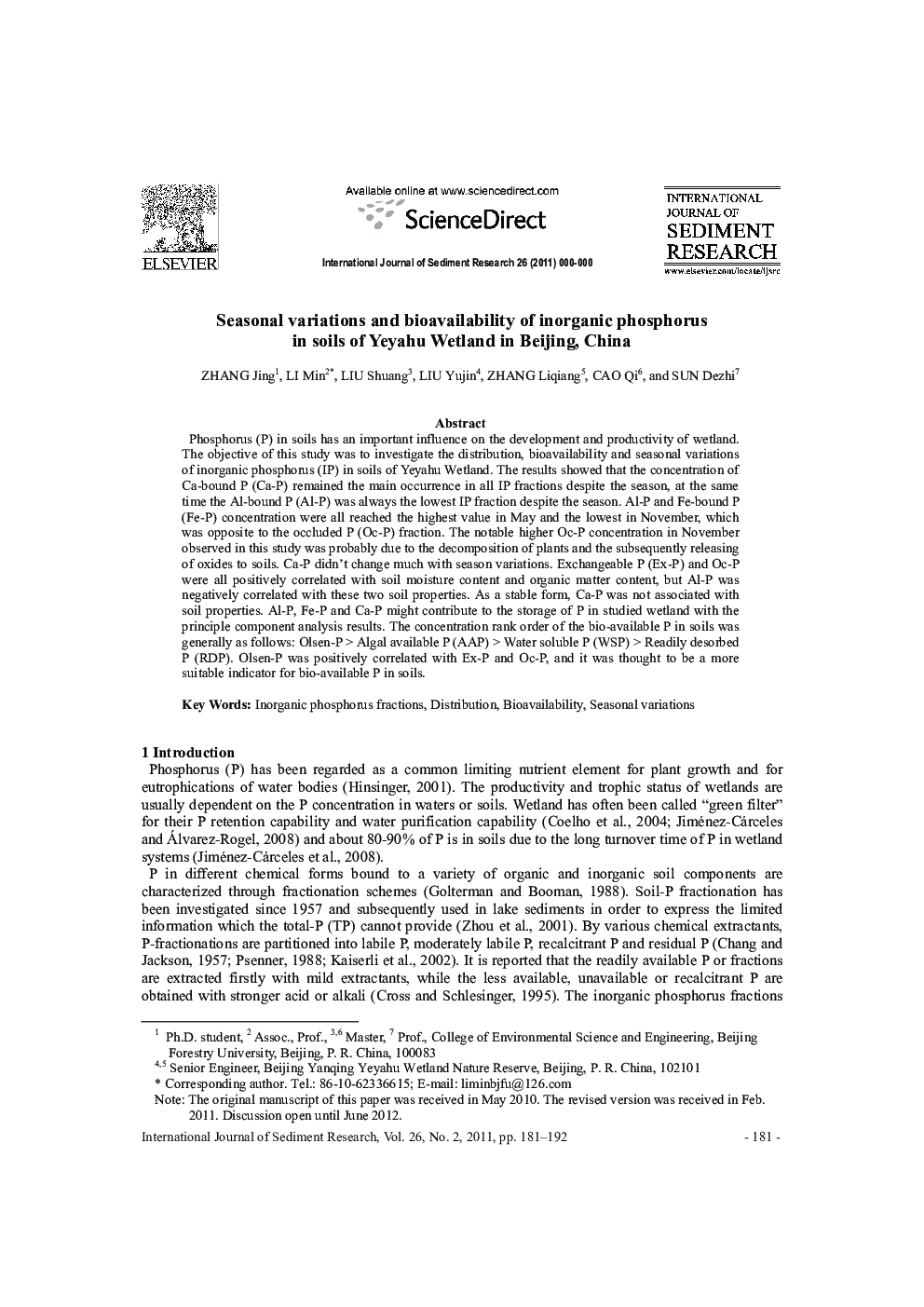| Article ID | Journal | Published Year | Pages | File Type |
|---|---|---|---|---|
| 4712608 | International Journal of Sediment Research | 2011 | 12 Pages |
Phosphorus (P) in soils has an important influence on the development and productivity of wetland. The objective of this study was to investigate the distribution, bioavailability and seasonal variations of inorganic phosphorus (IP) in soils of Yeyahu Wetland. The results showed that the concentration of Ca-bound P (Ca-P) remained the main occurrence in all IP fractions despite the season, at the same time the Al-bound P (Al-P) was always the lowest IP fraction despite the season. Al-P and Fe-bound P (Fe-P) concentration were all reached the highest value in May and the lowest in November, which was opposite to the occluded P (Oc-P) fraction. The notable higher Oc-P concentration in November observed in this study was probably due to the decomposition of plants and the subsequently releasing of oxides to soils. Ca-P didn't change much with season variations. Exchangeable P (Ex-P) and Oc-P were all positively correlated with soil moisture content and organic matter content, but Al-P was negatively correlated with these two soil properties. As a stable form, Ca-P was not associated with soil properties. Al-P, Fe-P and Ca-P might contribute to the storage of P in studied wetland with the principle component analysis results. The concentration rank order of the bio-available P in soils was generally as follows: Olsen-P > Algal available P (AAP) > Water soluble P (WSP) > Readily desorbed P (RDP). Olsen-P was positively correlated with Ex-P and Oc-P, and it was thought to be a more suitable indicator for bio-available P in soils.
